Discover 35 hidden attractions, cool sights, and unusual things to do in Pittsburgh (United States). Don't miss out on these must-see attractions: The Andy Warhol Museum, Carnegie Museum of Natural History, and Nationality Rooms. Also, be sure to include Randyland in your itinerary.
Below, you can find the list of the most amazing places you should visit in Pittsburgh (Pennsylvania).
Table of Contents
The Andy Warhol Museum
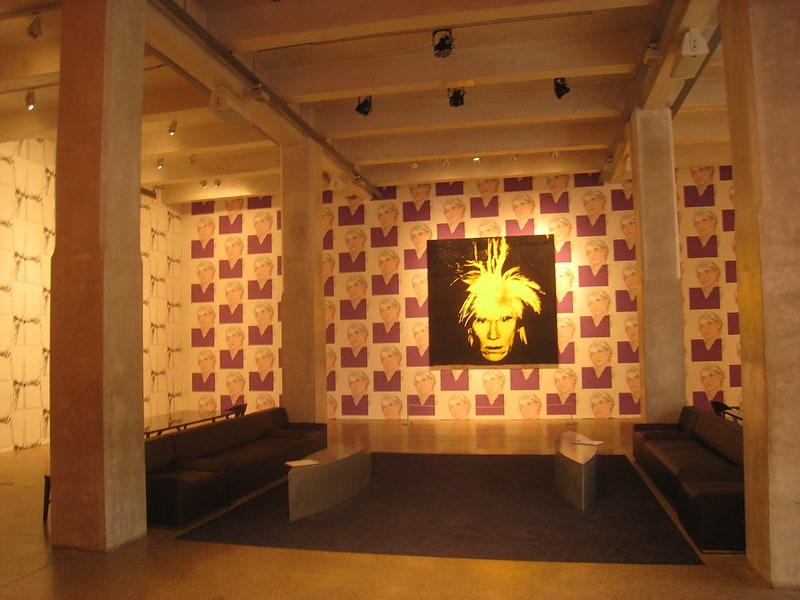
Warhol's works and the art he inspired. The Andy Warhol Museum is located on the North Shore of Pittsburgh, Pennsylvania, in the United States. It is the largest museum in North America dedicated to a single artist. The museum holds an extensive permanent collection of art and archives from the Pittsburgh-born pop art icon Andy Warhol.
The Andy Warhol Museum is one of the four Carnegie Museums of Pittsburgh and is a collaborative project of the Carnegie Institute, the Dia Art Foundation and The Andy Warhol Foundation for the Visual Arts (AWFVA).
The museum is located in an 88,000-square-foot (8,200 m2) facility on seven floors. Containing 17 galleries, the museum features 900 paintings, close to 2,000 works on paper, over 1,000 published unique prints, 77 sculptures, 4,000 photographs, and over 4,350 Warhol films and videotaped works. Its most recent operating budget (2010) was $6.1 million. In addition to its Pittsburgh location the museum has sponsored 56 traveling exhibits that have attracted close to nine million visitors in 153 venues worldwide since 1996.[1]
Address: 117 Sandusky St, 15212 Pittsburgh (North Side)
Carnegie Museum of Natural History
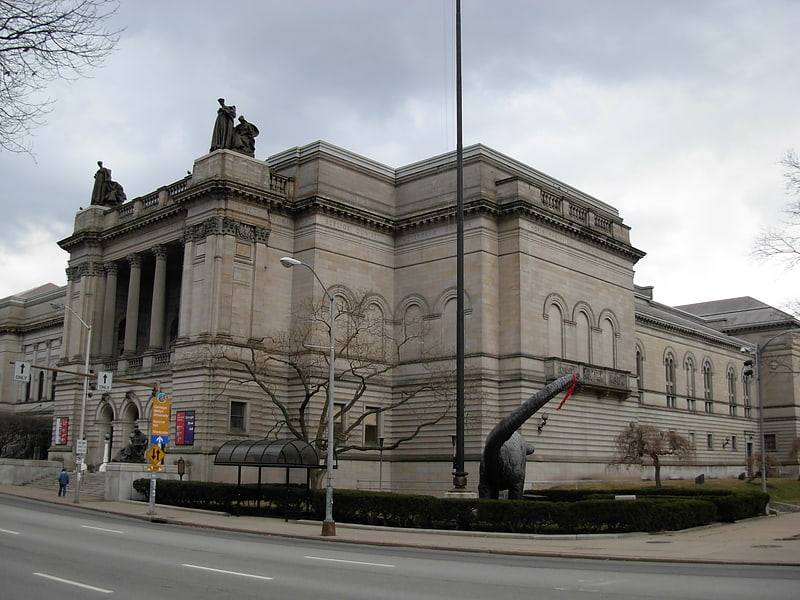
Museum. The Carnegie Museum of Natural History is a natural history museum in the Oakland neighborhood of Pittsburgh, Pennsylvania. It was founded by Pittsburgh-based industrialist Andrew Carnegie in 1896. Housing some 22 million specimens, the museum features one of the finest paleontological collections in the world.[2]
Address: 4400 Forbes Ave, 15213 Pittsburgh (Central Pittsburgh)
Nationality Rooms
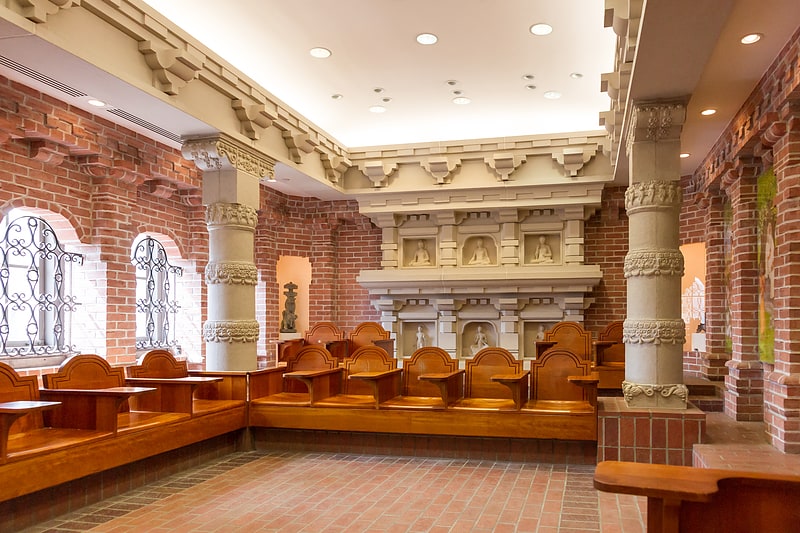
Museum in Pittsburgh, Pennsylvania. The Nationality Rooms are a group of 31 classrooms in the University of Pittsburgh's Cathedral of Learning depicting and donated by the national and ethnic groups that helped build the city of Pittsburgh. The rooms are designated as a Pittsburgh History and Landmarks Foundation historical landmark and are located on the 1st and 3rd floors of the Cathedral of Learning, itself a national historic landmark, on the University of Pittsburgh's main campus in the Oakland neighborhood of Pittsburgh, Pennsylvania, United States. Although of museum caliber, 29 of the 31 rooms are used as daily classrooms by University of Pittsburgh faculty and students, while the other two are display rooms viewed through glass doors, utilized primarily for special events, and can only be explored via special guided tour. The Nationality Rooms also serve in a vigorous program of intercultural involvement and exchange in which the original organizing committees for the rooms remain as participants and which includes a program of annual student scholarship to facilitate study abroad. In addition, the Nationality Rooms inspire lectures, seminars, concerts exhibitions, and social events which focus on the various heritages and traditions of the nations represented. The national, traditional, and religious holidays of the nations represented are celebrated on campus and the rooms are appropriately decorated to reflect these occasions. The Nationality Rooms are available daily for public tours as long as the particular room is not being used for a class or other university function.[3]
Address: 4200 Fifth Ave, 15260 Pittsburgh (Central Pittsburgh)
Randyland
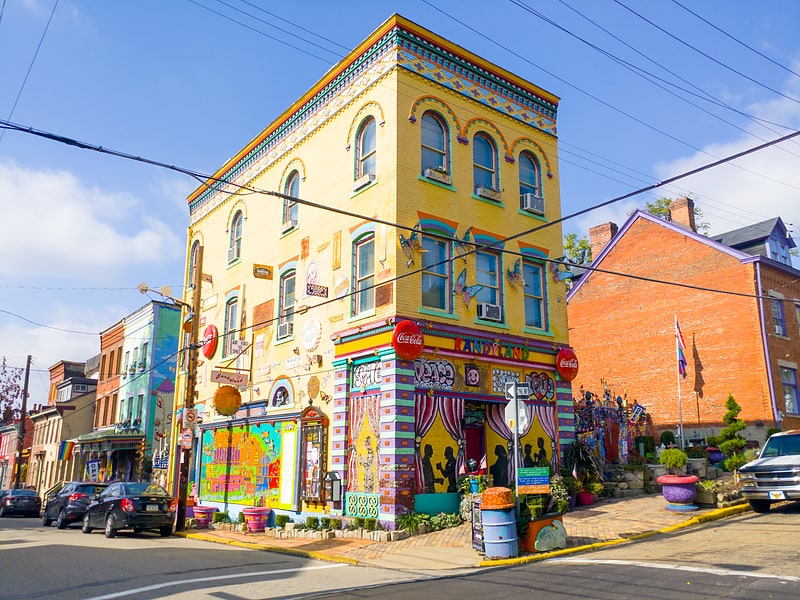
Museum. Randyland is an art museum located in Pittsburgh, Pennsylvania. It is widely regarded as one of America's most colorful public art landmarks. The museum was created by Randy Gilson and is dedicated to his therapy which involves painting and taking care of the grounds at Randyland. Some people consider his paintings to be outsider art.
Randyland has played an important role in the cultural rejuvenation of Pittsburgh with its neighbors City of Asylum and Mattress Factory. Randy Gilson's creation has received international attention through viral listicles. It now counts itself among the most photographed places on Instagram. Admission is free.[4]
Address: 1501 Arch St, 15212-4028 Pittsburgh (North Side)
Mattress Factory
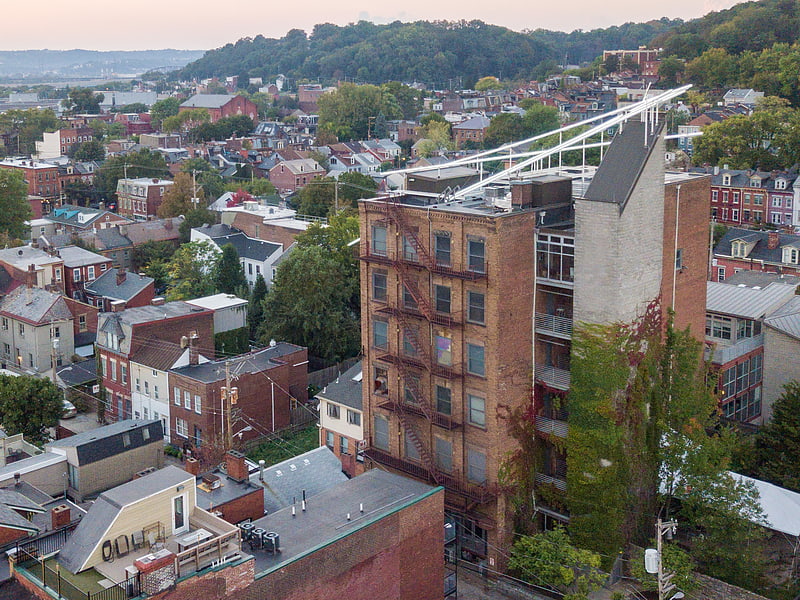
Museum in Pittsburgh, Pennsylvania. The Mattress Factory is a contemporary art museum located in Pittsburgh, Pennsylvania. It was a pioneer of site-specific installation art and features permanent installations by artists Yayoi Kusama, James Turrell, and Greer Lankton. The museum's roof itself is a light art installation and part of Pittsburgh's Northside evening skyline.
Barbara Luderowski purchased a derelict Stearns & Foster mattress warehouse in 1975. The museum achieved non-profit status in 1977. Over the next forty years, Luderowski would attract upcoming installation artists to fill its walls. The Mattress Factory along with its neighbors City of Asylum and Randyland are credited with playing a role in Pittsburgh's revitalization.[5]
Address: 500 Sampsonia Way, 15212-4444 Pittsburgh (North Side)
Carnegie Museum of Art
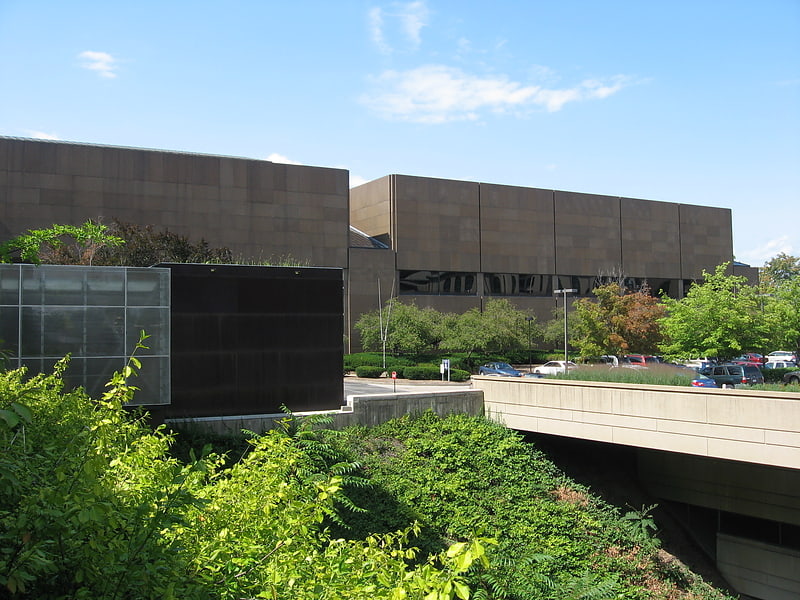
Multimedia exhibits of contemporary art. The Carnegie Museum of Art, abbreviated CMOA, is an art museum in the Oakland neighborhood of Pittsburgh, Pennsylvania. The museum was founded in 1895 by the Pittsburgh-based industrialist Andrew Carnegie. It was the first museum in the United States with a primary focus on contemporary art. As instructed by its founder at the inception of the Carnegie International in 1896, the museum has been organizing many contemporary exhibitions that showcase the "Old Masters of tomorrow".[6]
Address: 4400 Forbes Ave, 15213-4007 Pittsburgh (Central Pittsburgh)
SouthSide Works
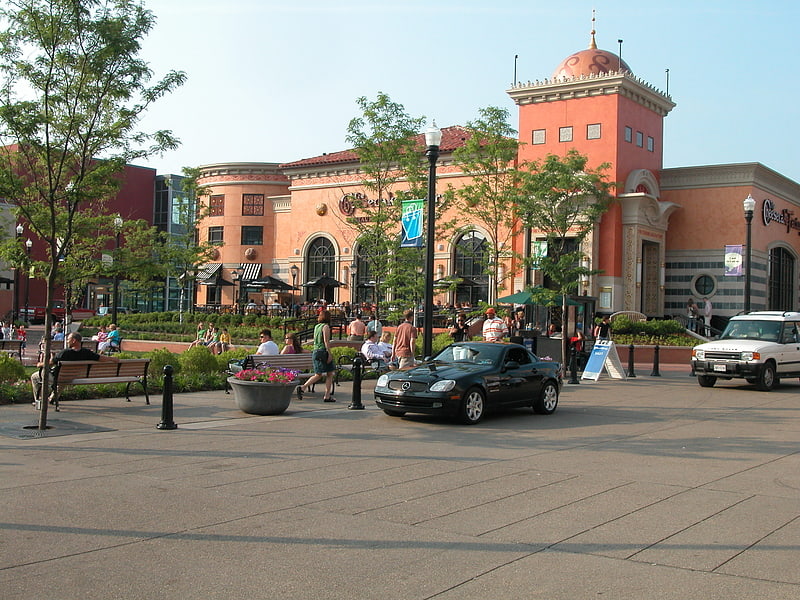
Shopping center in Pittsburgh, Pennsylvania. SouthSide Works is an open-air retail, office, entertainment, and residential complex located on the South Side of the city of Pittsburgh, Pennsylvania, U.S. and just across the Monongahela River from the Pittsburgh Technology Center, the University of Pittsburgh and Carnegie Mellon University. The $300 million complex opened in stages between 2002 and 2004 and offers more than 34 acres of shops, offices, hotels and apartments, and has a new urbanist design. The site has over 330,000 square feet of specialty retail, restaurant, hotel, and apartment space. In addition, the site has 700,000 square feet of office space.[7]
Address: 425 Cinema Dr, 15203-2373 Pittsburgh (South Side)
Pittsburgh Zoo & PPG Aquarium
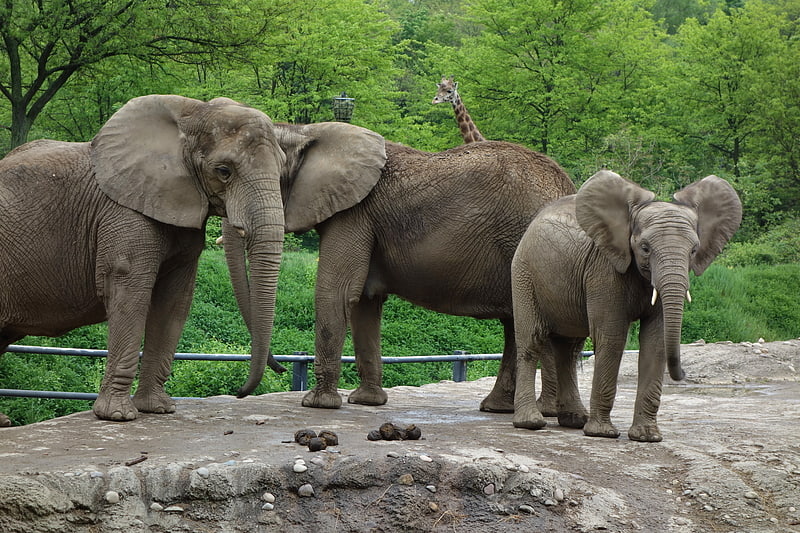
Zoo in Pittsburgh. The Pittsburgh Zoo & PPG Aquarium is one of only six major zoo and aquarium combinations in the United States. Located in Pittsburgh, Pennsylvania's Highland Park, the zoo sits on 77 acres of park land where it exhibits more than 4,000 animals representing 475 species, including 20 threatened or endangered species.
The zoo's accredited membership of the Association of Zoos and Aquariums (AZA) was dropped in 2015.[8]
Address: 7370 Baker St, 15206-1075 Pittsburgh (East End)
Dippy
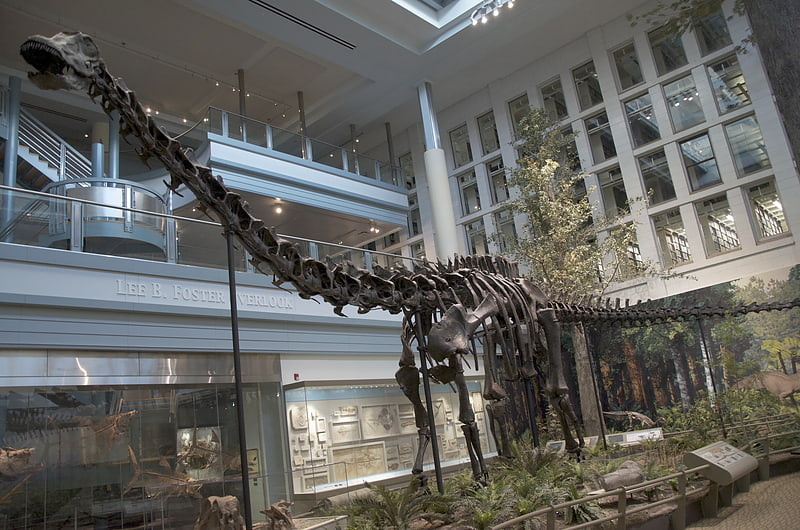
Dippy is a composite Diplodocus skeleton in Pittsburgh's Carnegie Museum of Natural History, and the holotype of the species Diplodocus carnegii. It is considered the most famous single dinosaur skeleton in the world, due to the numerous plaster casts donated by Andrew Carnegie to several major museums around the world at the beginning of the 20th century.
The casting and distribution of the skeleton made the word dinosaur a household word; for millions of people it became the first dinosaur they had ever seen. It was also responsible for the subsequent popularity of the entire genus Diplodocus, since the skeleton has been on display in more places than any other sauropod dinosaur.
Its discovery was catalyzed by the announcement of the excavation of a large thigh bone (unrelated to Dippy) by William Harlow Reed near Medicine Bow, Wyoming in December 1898. On a return trip financed by Carnegie, Reed excavated Sheep Creek Quarry D in which he found the first part of Dippy's skeleton, a toe bone, on July 4, 1899. Its discovery on Independence Day, and its use in American diplomacy via Carnegie's international donations of replicas, led to its being nicknamed the "star-spangled dinosaur". Dippy became the centrepiece of the Carnegie Museum of Natural History, such that the museum became known as "the house that Dippy built".
In 2016, a petition to the International Commission on Zoological Nomenclature was being considered which proposed to make Diplodocus carnegii the new type species of Diplodocus. The proposal was rejected in 2018, and D. longus has been maintained as the type species.[9]
Phipps Conservatory
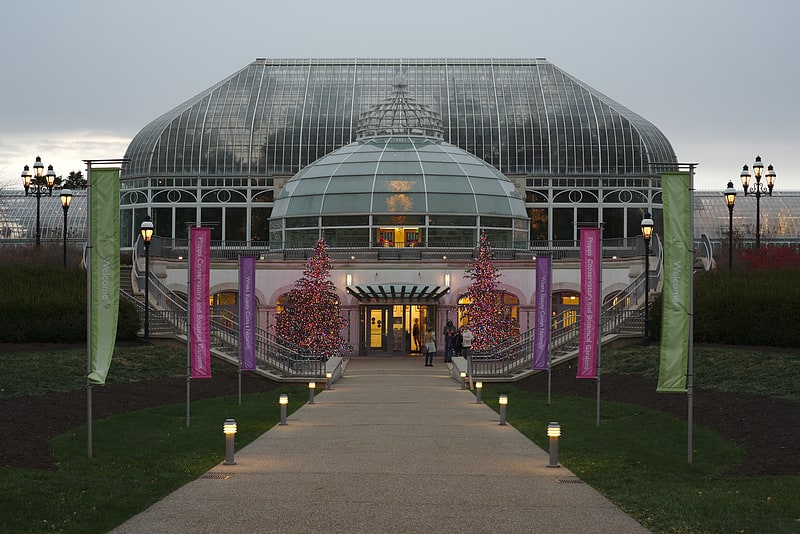
Botanical garden in Pittsburgh, Pennsylvania. Phipps Conservatory and Botanical Gardens is a botanical garden set in Schenley Park, Pittsburgh, Pennsylvania, United States. It is a City of Pittsburgh historic landmark and is listed on the National Register of Historic Places.
The gardens were founded in 1893 by steel and real-estate magnate Henry Phipps as a gift to the City of Pittsburgh. Its purpose is to educate and entertain the people of Pittsburgh with formal gardens and various species of exotic plants. Currently, the facilities house elaborate gardens within the fourteen room conservatory itself and on the adjoining grounds. In addition to its primary flora exhibits, the sophisticated glass and metalwork of the Lord & Burnham conservatory offers an interesting example of Victorian greenhouse architecture.
Phipps is one of the "greenest" facilities in the world. The entrance pavilion of the Phipps Conservatory has silver-level LEED certification. Its greenhouse production facility has received Platinum certification, the first and only greenhouse to be so certified. Moreover, the Center for Sustainable Landscapes, designed to be as environmentally sustainable as possible, is also LEED Platinum certified, and produces all of its own energy.[10]
Address: 1 Schenley Drive, 15213-3830 Pittsburgh (East End)
National Aviary
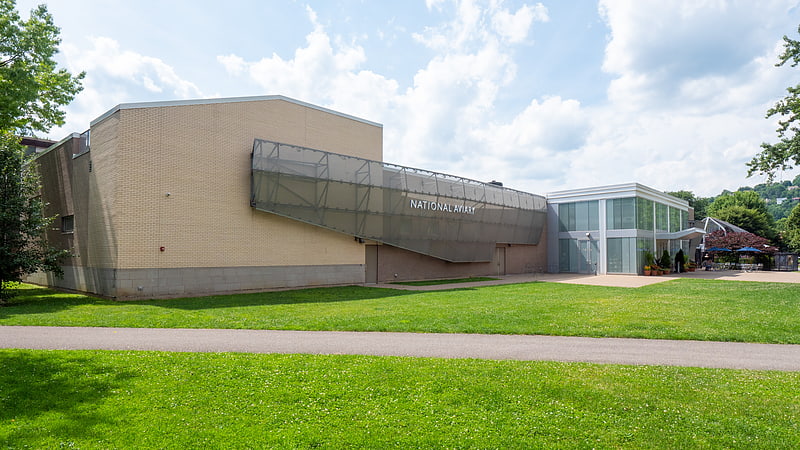
Bird zoo for encounters and kids' parties. The National Aviary, located in Pittsburgh, Pennsylvania, is the only independent indoor nonprofit aviary in the United States. It is also the country's largest aviary, and the only one accorded honorary "National" status by the United States Congress.
The aviary is home to more than 500 birds representing more than 150 species, and is a member of the Association of Zoos and Aquariums (AZA).[11]
Address: Allegheny Commons, 15212 Pittsburgh (North Side)
PNC Park
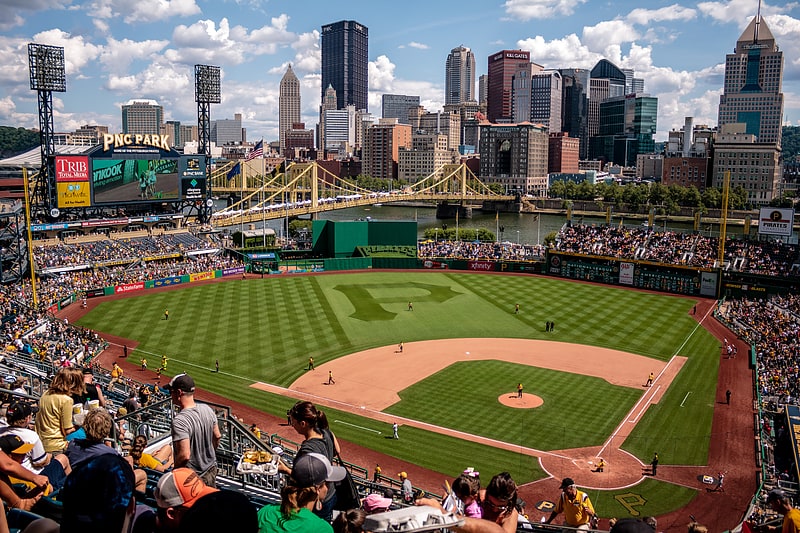
Stadium in Pittsburgh, Pennsylvania. PNC Park is a Major League Baseball stadium located on the North Shore of Pittsburgh, Pennsylvania. It is the fifth home of the Pittsburgh Pirates. It was opened during the 2001 MLB season, after the controlled implosion of the Pirates' previous home, Three Rivers Stadium. PNC Park stands just east of its predecessor along the Allegheny River with a view of the Downtown Pittsburgh skyline. Constructed of steel and limestone, PNC Park features a natural grass playing surface and has a seating capacity of 38,747 people for baseball.
Plans to build a new stadium for the Pirates originated in 1991 but did not come to fruition for five years. Funded in conjunction with Heinz Field and the David L. Lawrence Convention Center, the park was constructed for $216 million over 24 months, faster than most modern stadiums. Built in the "retro-classic" style modeled after past venues like Pittsburgh's Forbes Field, PNC Park also introduced unique features, such as the use of limestone in the building's facade. The park also features a riverside concourse, steel truss work, an extensive out-of-town scoreboard, and local eateries. Several tributes to former Pirate Roberto Clemente were incorporated into the ballpark, which included renaming the Sixth Street Bridge behind it in his honor. In addition to the Pirates' regular season and postseason home games, PNC Park has hosted other sporting events, including the 2006 Major League Baseball All-Star Game and numerous concerts.
PNC Financial Services originally purchased the naming rights in 1998 for $30 million over 20 years. Their current naming rights agreement runs through 2031.
PNC Park is widely considered one of the best ballparks in America because of its location, views of the Pittsburgh skyline and Allegheny River, timeless design, and clear angles of the field from every seat.[12]
Address: Pittsburgh, 115 Federal Street
Frick Art & Historical Center
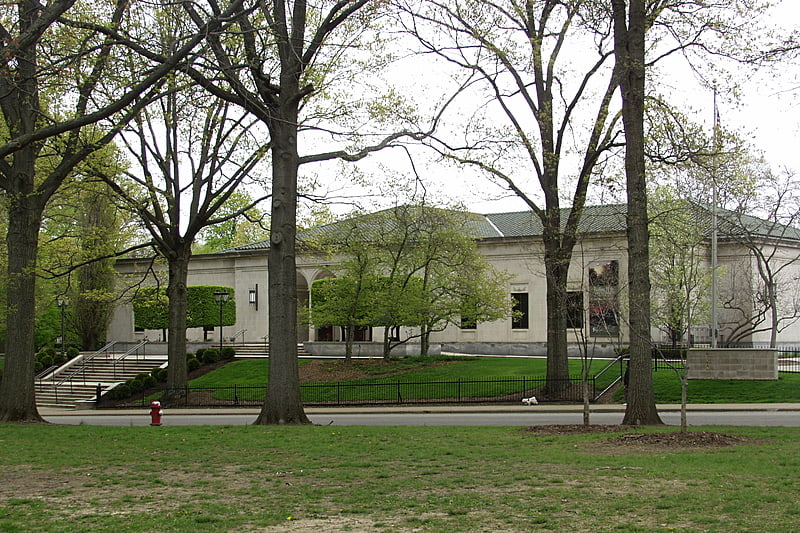
Museum in Pittsburgh, Pennsylvania. The Frick Pittsburgh is a cluster of museums and historical buildings located in Pittsburgh, Pennsylvania, United States and formed around the Frick family's nineteenth-century residence known as "Clayton". It focuses on the interpretation of the life and times of Henry Clay Frick, industrialist and art collector.
The complex, located on 5.5 acres (22,000 m2) of lawn and gardens in the city's Point Breeze neighborhood, includes Clayton, the restored Frick mansion; The Frick Art Museum; The Car and Carriage Museum; the Greenhouse; the Frick children's playhouse; and The Café. The site welcomes over 100,000 visitors a year. Admission is free.
Helen Clay Frick (1888—1984) was the driving force to preserve the Frick estate and allow it to open to the public after her death.[13]
Address: 7227 Reynolds St, 15208-2919 Pittsburgh (East End)
Cathedral of Learning
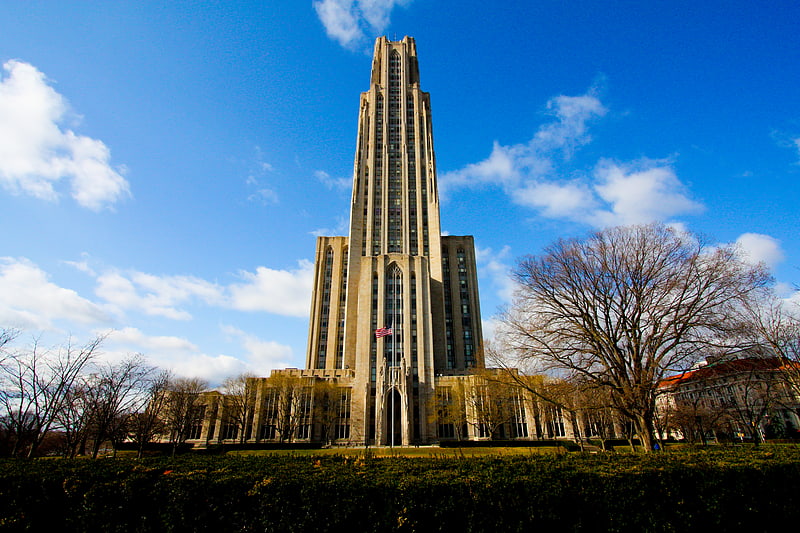
Gothic Revival skyscraper at a school. The Cathedral of Learning is a 42-story skyscraper that serves as the centerpiece of the University of Pittsburgh's main campus in the Oakland neighborhood of Pittsburgh, Pennsylvania, United States. Standing at 535 feet, the 42-story Late Gothic Revival Cathedral is the tallest educational building in the Western Hemisphere and the second-tallest university building in the world, after the main building of Moscow State University. It is also the second-tallest gothic-styled building in the world, after the Woolworth Building in Manhattan. The Cathedral of Learning was commissioned in 1921 and ground was broken in 1926 under general contractor Stone & Webster. The first class was held in the building in 1931 and its exterior finished in October 1934, prior to its formal dedication in June 1937. It is a Pittsburgh landmark listed in the National Register of Historic Places.
Colloquially referred to as "Cathy" by some Pitt students, the Cathedral of Learning is a steel frame structure overlaid with Indiana limestone and contains more than 2,000 rooms and windows. It functions as a primary classroom and administrative center of the university, and is home to the Dietrich School of Arts and Sciences, the School of Social Work, and many of its departments, as well as the University Honors College. It houses many specialty spaces, including a studio theater, food court, study lounges, offices, computer and language labs, 31 Nationality Rooms, and a half-acre (2000 m2, 22,000 ft2), 4-story-high, vaulted, gothic study and event hall. The building contains noted examples of stained glass, stone, wood, and iron work and is often used by the university in photographs, postcards, and other advertisements.[14]
Address: University of Pittsburgh, Pittsburgh (Central Pittsburgh)
Soldiers and Sailors Memorial Hall and Museum

Building in Pittsburgh, Pennsylvania. Soldiers and Sailors Memorial Hall and Museum is a National Register of Historic Places landmark in Pittsburgh, Pennsylvania, United States. It is the largest memorial in the United States dedicated solely to honoring all branches of military veterans and service personnel.
It was conceived by the Grand Army of the Republic in the 1890s as a way for Pittsburgh and Allegheny County to honor the dwindling ranks of its American Civil War veterans; it was built on what had served as the army mustering ground during the Civil War. The Memorial today represents all branches of the service and honors both career and citizen soldiers who have served the United States throughout its history.
Architect Henry Hornbostel designed the memorial in 1907. Dedicated in 1910, the building is in the Beaux-Arts style and is heroic in scale. It is located in the Oakland section of Pittsburgh at 4141 Fifth Avenue and adjacent to the University of Pittsburgh campus and its Cathedral of Learning. The building is set back from Fifth Avenue, featuring expansive and well-kept lawns dotted with large cannons and other war implements. Side streets flanking the building are Bigelow Boulevard and University Place; directly behind is O'Hara Street.
The Memorial houses rare and one-of-a-kind exhibits that span the eras from the Civil War to the present day conflicts. Since 1963 it has operated the "Hall of Valor" to honor individual veterans from the region who went above and beyond the call of duty. Today the hall has over 600 honorees among them are Medal of Honor, The Kearny Cross, Distinguished Service Cross, Navy Cross, Air Force Cross, Silver Star and Distinguished Flying Cross winners.
The building houses an auditorium seating 2,500, a banquet hall, and meeting rooms, in addition to its museum. The expansive lawn of the memorial sits on top of an underground parking garage operated under a long-term lease by the University of Pittsburgh.
It has served as host for many city, civic, university, and business events including the April 25, 1978 Gulf Oil Corporation shareholders meeting.[15]
Address: 4141 5th Ave, 15213-3547 Pittsburgh (Central Pittsburgh)
Carnegie Museums of Pittsburgh
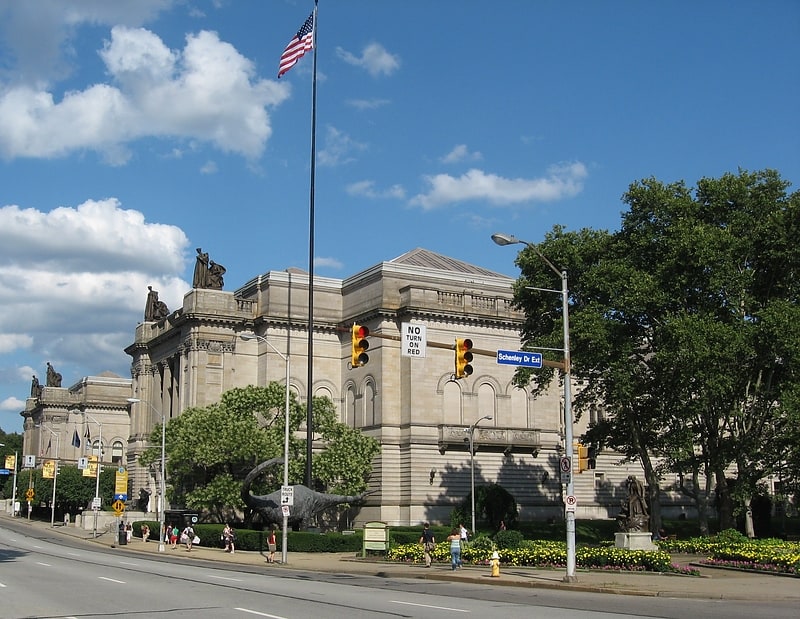
Museum in Pittsburgh. Carnegie Museums of Pittsburgh are four museums that are operated by the Carnegie Institute headquartered in the Carnegie Institute complex in the Oakland neighborhood of Pittsburgh, Pennsylvania. The Carnegie Institute complex, which includes the original museum, recital hall, and library, was added to the National Register of Historic Places on March 30, 1979.[16]
Address: 4301 Forbes Avenue, 15260 Pittsburgh (Central Pittsburgh)
Highland Park
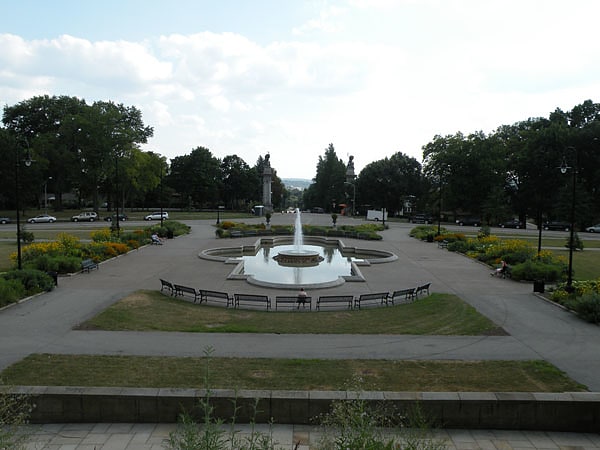
Neighborhood in Pittsburgh, Pennsylvania. Highland Park is a neighborhood in the northeastern part of Pittsburgh, Pennsylvania. Highland Park, the neighborhood, fully encompasses the park with the same name.
The neighborhood has 6,395 residents according to the 2010 United States Census. It occupies 748 acres (3.03 km2) built around the 380-acre (1.5 km2) park (also called Highland Park), and is bordered by the neighborhoods of East Liberty and Larimer to the south, Morningside to the west, Lincoln-Lemington-Belmar to the east, and the Allegheny River to the north.
The neighborhood is set apart from surrounding areas by Heth's Run, which separates Highland Park from Morningside to the west, and by Negley Run, which separates it from Lincoln-Lemington-Belmar to the east and Larimer to the south. The only direct land routes to Highland Park are from East Liberty, via Negley Avenue, Highland Avenue, and several other streets.[17]
Frick Fine Arts Building
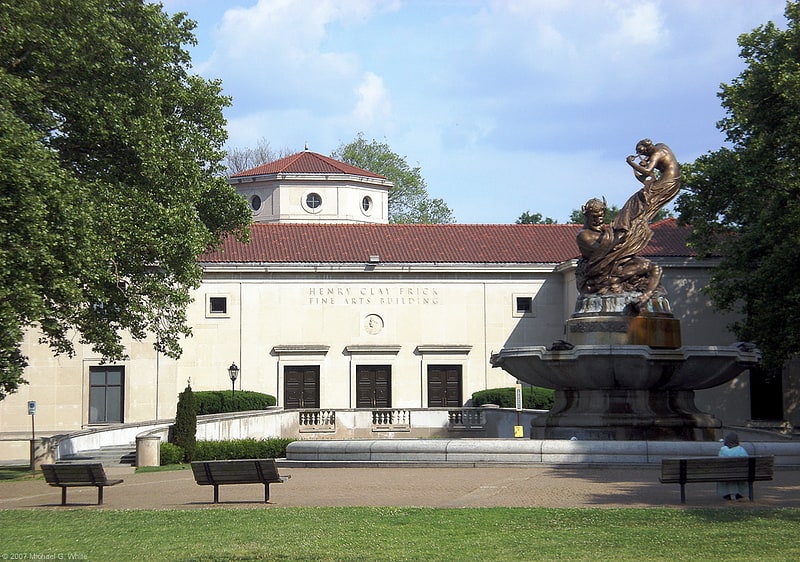
Building in Pittsburgh, Pennsylvania. The Henry Clay Frick Fine Arts Building is a landmark Renaissance villa and a contributing property to the Schenley Farms-Oakland Civic Historic District on the campus of the University of Pittsburgh in Pittsburgh, Pennsylvania, United States. The Frick Fine Arts Building sits on the southern edge of Schenley Plaza, opposite The Carnegie Institute, and is the home of Pitt's History of Art and Architecture Department, Studio Arts Department, and the Frick Fine Arts Library. Before its front steps is Mary Schenley Memorial Fountain.[18]
Address: 104 Frick Fine Arts Building, 15260 Pittsburgh (Central Pittsburgh)
Heinz Memorial Chapel

Chapel in Pittsburgh, Pennsylvania. Heinz Memorial Chapel is a Pittsburgh History and Landmarks Foundation Historic Landmark and a contributing property to the Schenley Farms National Historic District on the campus of the University of Pittsburgh in Pittsburgh, Pennsylvania, United States.[19]
Address: S Bellefield Ave, 15213 Pittsburgh (Central Pittsburgh)
Highmark Stadium
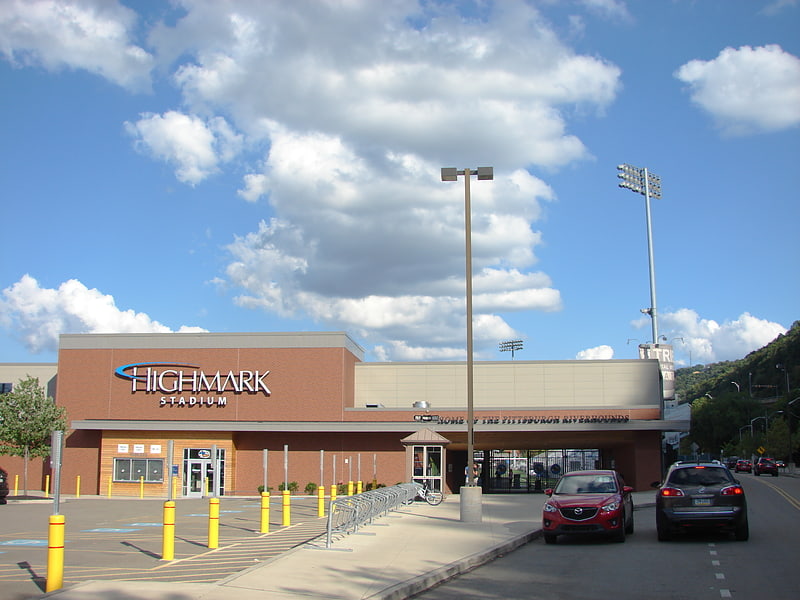
Stadium in Pittsburgh, Pennsylvania. Highmark Stadium is a 5,000-seat soccer-specific stadium in Pittsburgh's Station Square which is home to Pittsburgh Riverhounds SC of the USL Championship. The stadium was also home to the Pittsburgh Rebellion women's football team for 2017. Three local colleges use the stadium for soccer, lacrosse and rugby, and six different local high schools will use the field for soccer and lacrosse. The $10.2 million project began with the demolishing and excavating of the former Trib Total Media Amphitheatre, building foundations for the scoreboard, light poles and grading foundations for the grandstands as well as the installation of underground utilities. The field surface is FIFA 2-star certified artificial turf, the highest rating that an artificial surface can achieve, one of only six fields in the country to earn that rating. Other fields to earn this rating in the United States include: Providence Park, CenturyLink Field, and Gillette Stadium, all of which house Major League Soccer franchises.
On August 1, 2015, the supporters' section was renamed the Paul Child Stand in honor of Pittsburgh soccer legend Paul Child. About Highmark Stadium, Benjamin Zand of the BBC once said it is "probably the most beautiful stadium I've ever seen." Highmark Stadium is notable for its picturesque albeit unusual layout, with the Monongahela River in close proximity to the field. As a result, during daytime broadcasts of Riverhound matches, the river serves as a backdrop for the action on the field.[20]
Address: 510 W Station Square Dr, 15219-1166 Pittsburgh (South Side)
Point of View Sculpture
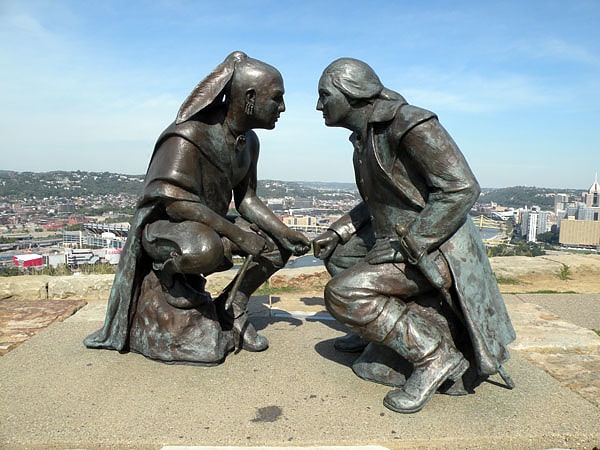
Work of art. Point of View is a 2006 landmark public sculpture in bronze by James A. West; it sits in a parklet named for the work of art, Point of View Park, in Pittsburgh, Pennsylvania.
The piece depicts George Washington and the Seneca leader Guyasuta, with their weapons down, in a face-to-face meeting in October 1770, when the two men met while Washington was in the area examining land for future settlement along the Ohio River.
The work weighs 750 lbs. and cost $130,000 for materials with charitable donations of land, pedestal and artist time.
Point of View sits on the edge of Mount Washington (Grandview Avenue at Sweetbriar Street) on the westernmost end of Grand View Scenic Byway Park and the Grand View Scenic Byway, a designated Pennsylvania scenic byway.
The sculpture was dedicated on October 25, 2006, by mayor Luke Ravenstahl.[21]
Mr. Smalls Theatre
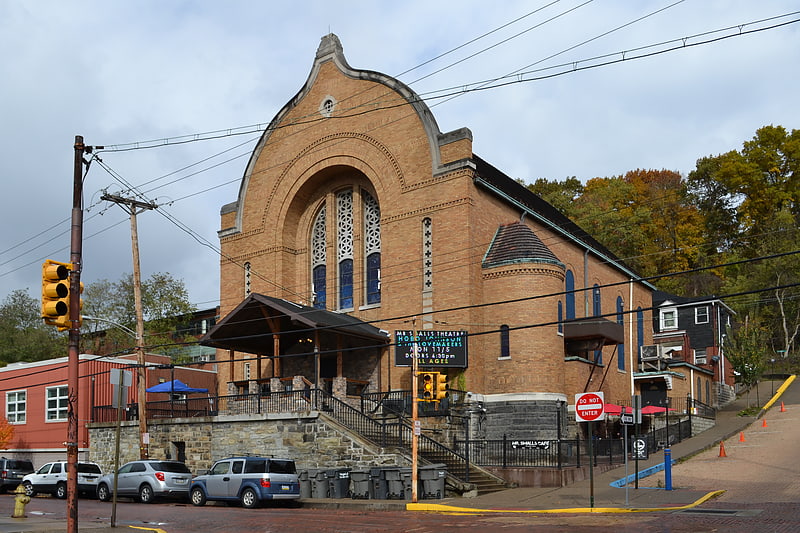
Mr. Smalls is a live-music venue in the Millvale neighborhood of Pittsburgh, Pennsylvania. It is an eclectic and innovative indie venue due to its location in a converted church from the early 20th century, its multiple interior event spaces, and its hosting of thousands of national, regional and local artists since its inception as a venue. Mr. Smalls has been the live music venue for many touring national acts over the years including Fall Out Boy, Bill Clinton, Snoop Dogg, Muse, Smashing Pumpkins, Bone Thugs N Harmony, Kesha, Interpol and Metric. It has a capacity of over 1,000 people amongst its various interior event spaces, namely the two performance spaces: the Theatre and the Funhouse.[22]
Address: 400 Lincoln Ave, 15209-2670 Millvale
Petersen Events Center
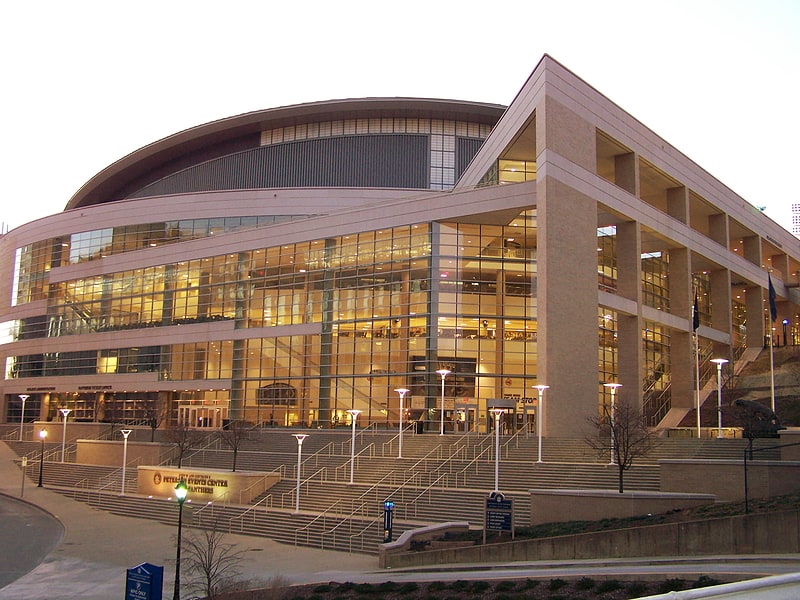
Arena in Pittsburgh, Pennsylvania. The Petersen Events Center is a 12,508-seat multi-purpose arena on the campus of the University of Pittsburgh in the Oakland neighborhood. The arena is named for philanthropists John Petersen and his wife Gertrude, who donated $10 million for its construction. John Petersen, a Pitt alumnus, is a native of nearby Erie and is the retired President and CEO of Erie Insurance Group. The Petersen Events Center was winner of the 2003 Innovative Architecture & Design Honor Award from Recreation Management magazine.[23]
Address: 3719 Terrace St, 15261-0001 Pittsburgh (Central Pittsburgh)
Miniature Railroad & Village
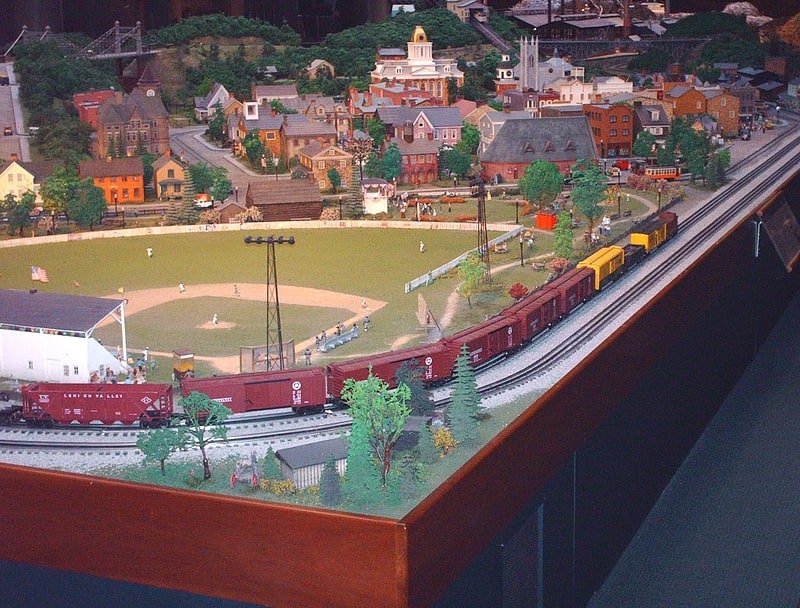
The Miniature Railroad & Village is a large and detailed model train layouts diorama of western Pennsylvania from 1880 to 1930. It is a long-running display currently located in the Carnegie Science Center in Pittsburgh, Pennsylvania, the MRRV has been a Pittsburgh tradition for over 50 years.[24]
Address: 1 Allegheny Ave, 15212 Pittsburgh (North Side)
Bicycle Heaven

Museum in Pittsburgh, Pennsylvania. Bicycle Heaven is the largest transportation museum in the world dedicated to bicycles. The museum was founded by Craig Morrow and comprises his personal collection gathered over decades. It is located in Pittsburgh, Pennsylvania.
The museum is an active collection. The 650m² show room contains over 3,500 bicycles with an additional 27,000 in storage. There are over 100,000 parts to keep the collection in repair.
Bicycle Heaven maintains free entry by serving as a bike shop and consulting as prop agents for film, television and theatrical productions. After filming the bicycles are returned and become part of the permanent collection.[25]
Address: 1800 Preble & Columbus Ave, 15233 Pittsburgh (North Side)
Carnegie Science Center
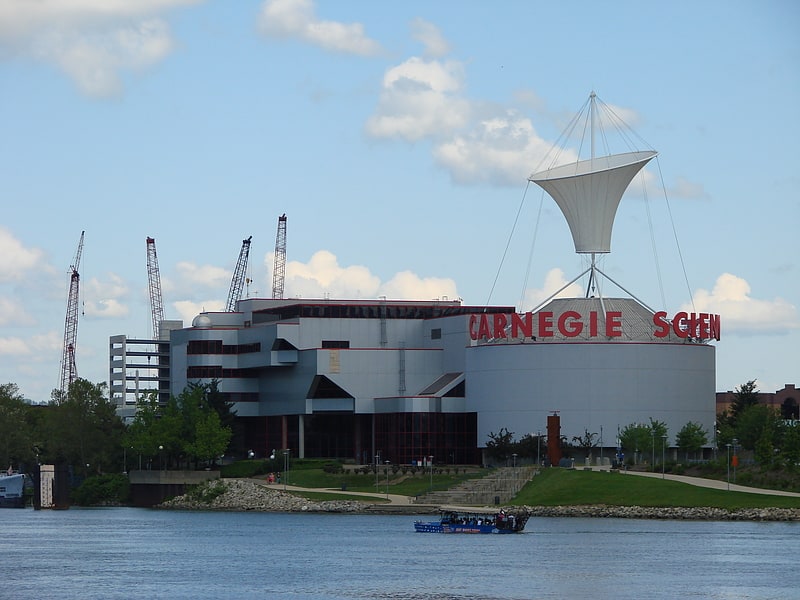
The Carnegie Science Center is one of the four Carnegie Museums of Pittsburgh, Pennsylvania. It is located in the Chateau neighborhood. It is located across the street from Heinz Field.[26]
Address: 1 Allegheny Ave, 15212-5895 Pittsburgh (North Side)
Albright United Methodist Church
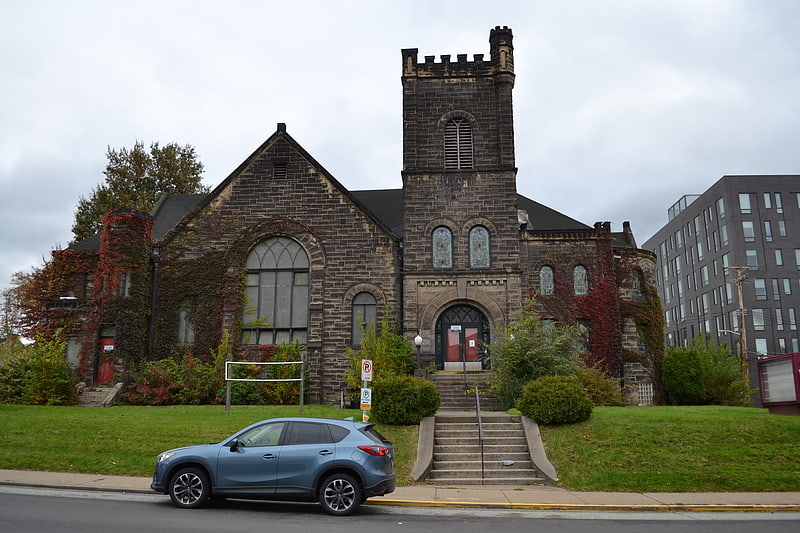
The Albright United Methodist Church is located at 486 S. Graham Street at the nexus of the Bloomfield, Shadyside, and Friendship neighborhoods of Pittsburgh, Pennsylvania. The church was designed by architect Chancey W. Hodgdon in an Eclectic, Richardson Romanesque style with prominent elements of Gothic Revival, and was built in 1905-1906.[27]
Address: 486 S Graham St, Pittsburgh (East End)
Fort Pitt Museum
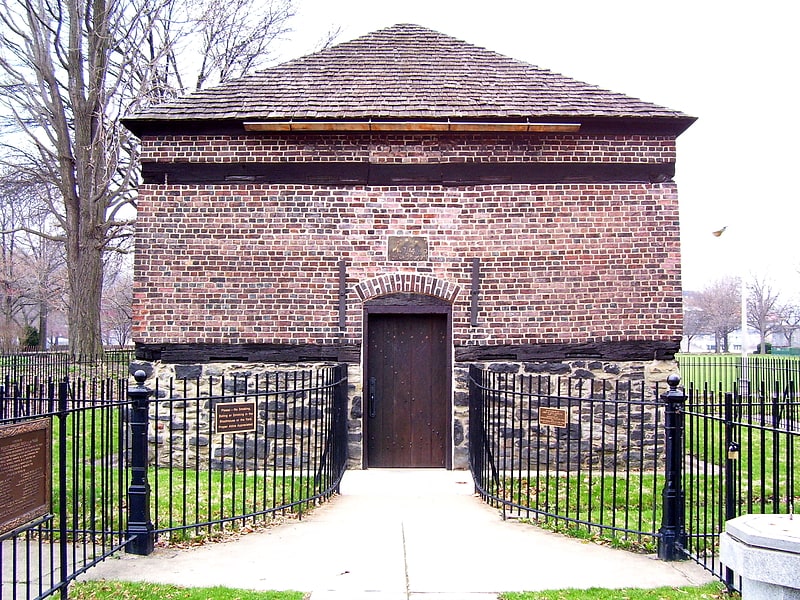
Museum in Pittsburgh, Pennsylvania. Fort Pitt Museum is an indoor/outdoor museum that is administered by the Senator John Heinz History Center in downtown Pittsburgh, Allegheny County, Pennsylvania in the United States. It is at the confluence of the Monongahela and Allegheny Rivers, where the Ohio River is formed. Fort Pitt Museum is surrounded by Point State Park, a Pennsylvania state park named for the geographically and historically significant point that is between the rivers. This piece of land was key to controlling the upper reaches of the Ohio River Valley and western Pennsylvania, before, during and after the French and Indian War as well as the American Revolution.
The museum is in a recreated bastion of Fort Pitt, which was originally built in 1758 by the British. An outline of Fort Duquesne is nearby. The historical focus of the museum is the role that Fort Pitt played during the French and Indian War. The museum also features detailed information on Fort Pitt's role during the American Revolution, the Whiskey Rebellion and the founding of Pittsburgh. The museum was established and operated by the Pennsylvania Historical and Museum Commission until its closure in August 2009 from state budget cuts. The Heinz Center took over the operation of the museum and reopened it in April 2010.[28]
Address: 601 Commonwealth Pl, 15222-1213 Pittsburgh (Central Pittsburgh)
Saint Paul Cathedral
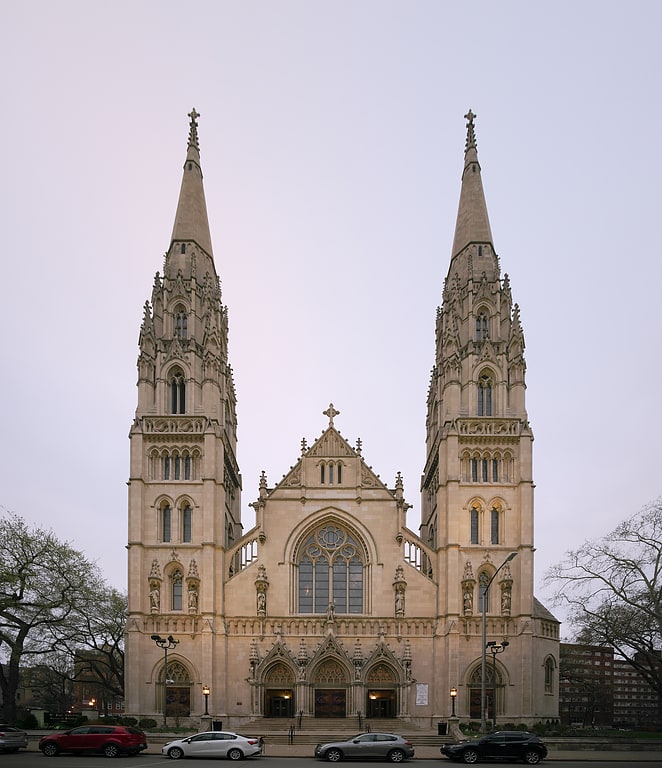
Catholic cathedral in Pittsburgh, Pennsylvania. Saint Paul Cathedral is the mother church of the Diocese of Pittsburgh in Pittsburgh, Pennsylvania. St. Paul's parish was established in 1833.[29]
Address: 108 N Dithridge St, 15213 Pittsburgh (Central Pittsburgh)
Allegheny Observatory
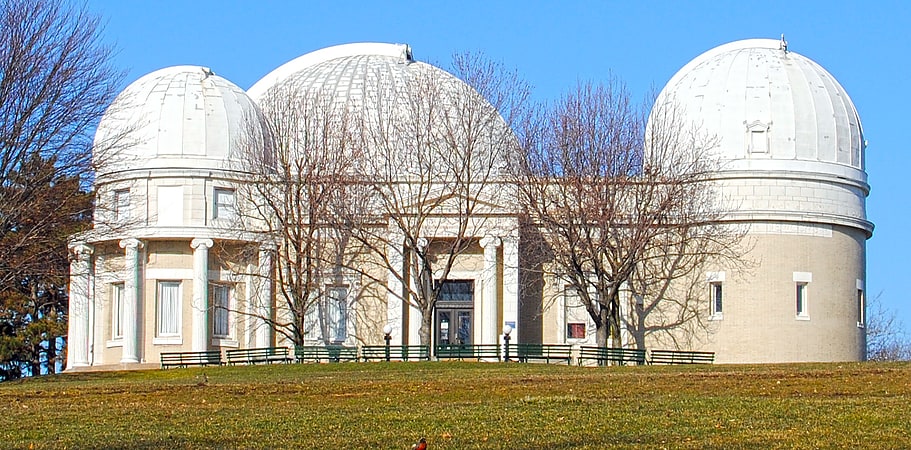
Research institute in Pittsburgh, Pennsylvania. The Allegheny Observatory is an American astronomical research institution, a part of the Department of Physics and Astronomy at the University of Pittsburgh. The facility is listed on the National Register of Historic Places and is designated as a Pennsylvania state and Pittsburgh History and Landmarks Foundation historic landmark.[30]
Address: 159 Riverview Ave, 15214-2299 Pittsburgh (North Side)
Rivers Casino
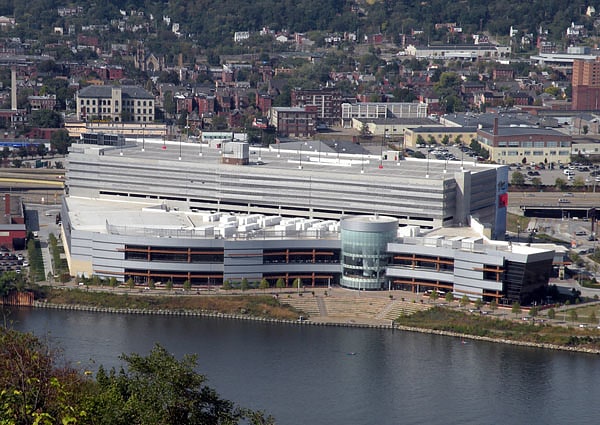
Casino in Pittsburgh, Pennsylvania. The Rivers Casino is a casino in Pittsburgh, Pennsylvania, United States. It is owned by Holdings Acquisition Co. L.P. a joint venture of Walton Street Capital LLC and High Pitt Gaming LP. Located in Pittsburgh's Chateau neighborhood along the Ohio River, adjacent to the Carnegie Science Center and nearby Heinz Field and PNC Park, it had its groundbreaking in December 2007 and opened on August 9, 2009. The casino was originally to be built by Don H. Barden, but financial troubles forced him to sell 75% of his interest in the casino to Holdings Acquisition Co on July 16, 2008. The casino has 3,000 slot machines.[31]
Address: Pittsburgh, 777 Casino Drive, Pittsburgh, PA, 15212
PPG Place
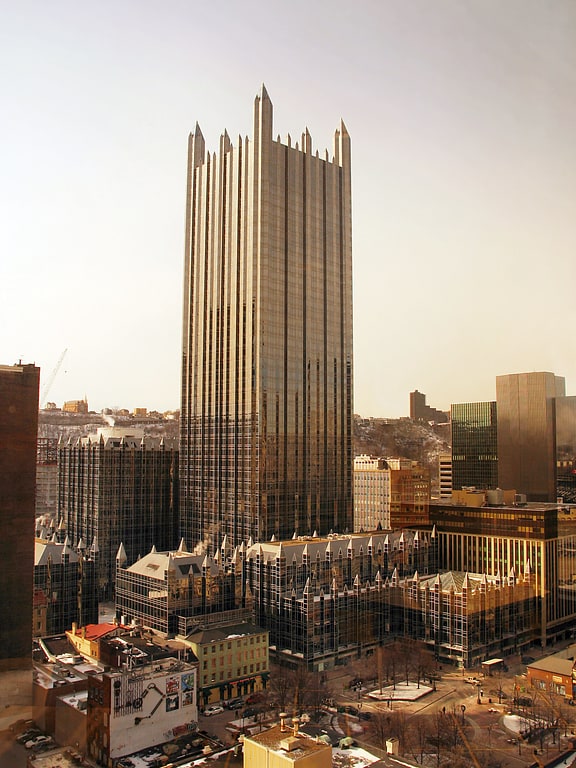
Building complex in Pittsburgh, Pennsylvania. PPG Place is a complex in downtown Pittsburgh, Pennsylvania, consisting of six buildings within three city blocks and five and a half acres. PPG Place was designed by architects Philip Johnson and John Burgee.
Named for its anchor tenant, PPG Industries, who initiated the project for its headquarters, the buildings are all of matching glass design consisting of 19,750 pieces of glass. The complex centers on One PPG Place, a 40-story office building. Groundbreaking ceremonies occurred on January 28, 1981. The complex buildings opened between 1983 and 1984, and a dedication ceremony took place on April 11, 1984. Total cost of construction was $200 million ($561.6 million today). The buildings were sold by The Hillman Company to Highwoods Properties in 2011.[32]
Address: Stanwix St. and 4th Ave, 15222 Pittsburgh (Central Pittsburgh)
William Pitt Union
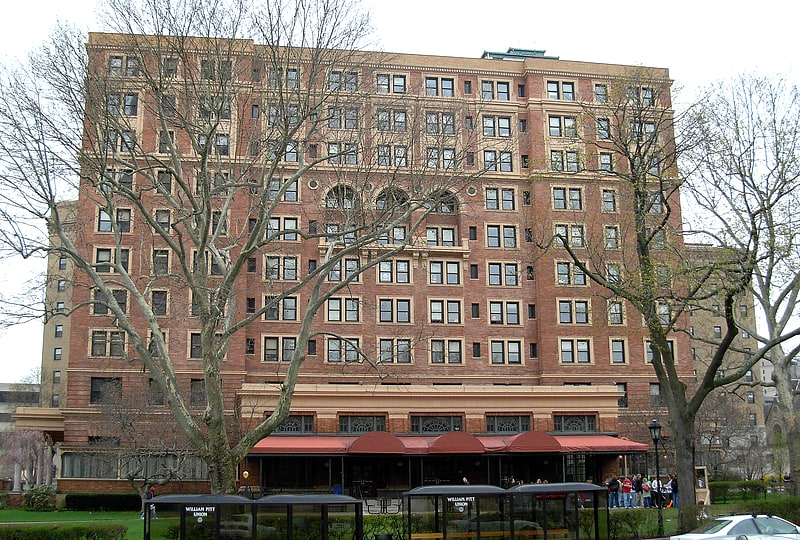
Student union in Pittsburgh, Pennsylvania. The William Pitt Union, built in 1898 as the Hotel Schenley, is the student union building of the University of Pittsburgh main campus, and is a Pennsylvania and Pittsburgh History and Landmarks Foundation Historic Landmark. Designed by Pittsburgh-based architects Rutan & Russell in the Beaux-Arts style of architecture, the Schenley Hotel catered to local and visiting well-to-do people. The University of Pittsburgh acquired the property in 1956.[33]
Address: 3959 5th Ave, 15213 Pittsburgh (Central Pittsburgh)
Benedum Center
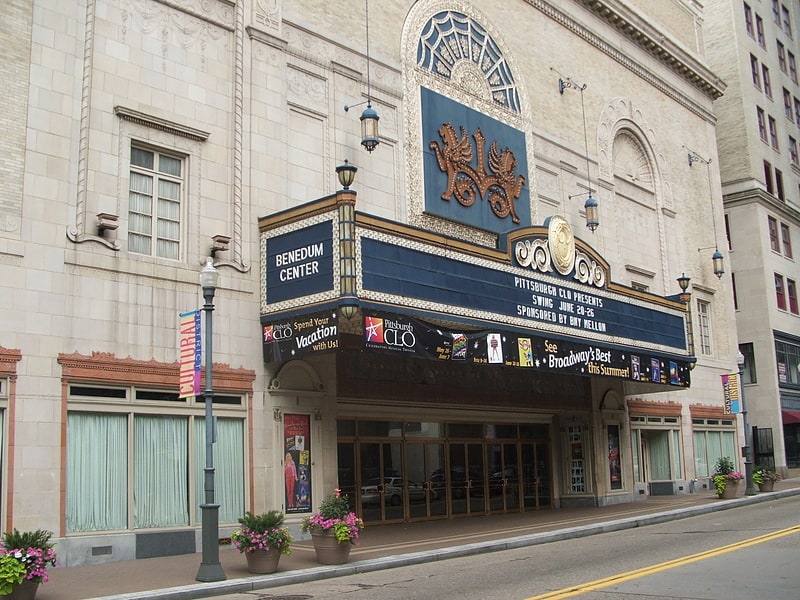
Theater in Pittsburgh, Pennsylvania. The Benedum Center for the Performing Arts is a theater and concert hall located at 237 7th Street in the Cultural District of Pittsburgh, Pennsylvania. Designed by the Philadelphia architectural firm Hoffman-Henon, it was built in 1928 as the Stanley Theatre. The former movie palace was renovated and reopened as the Benedum Center for the Performing Arts in 1987.[34]
Address: Pittsburgh, 237 7th Street
David L. Lawrence Convention Center
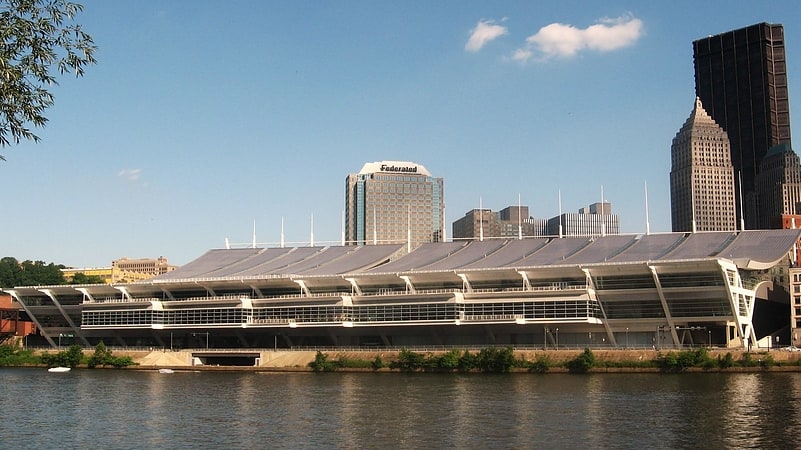
Building in Pittsburgh, Pennsylvania. The David L. Lawrence Convention Center is a 1,500,000-square-foot convention, conference and exhibition building in downtown Pittsburgh in the U.S. commonwealth of Pennsylvania. It is served by two exits on Interstate 579. The initial David L. Lawrence Convention Center was completed on the site on February 7, 1981, but as part of a renewal plan the new, completely redesigned center was opened in 2003 and funded in conjunction with nearby Heinz Field and PNC Park. It sits on the southern shoreline of the Allegheny River. It is the first LEED-certified convention center in North America and one of the first in the world. It is owned by the Sports & Exhibition Authority of Pittsburgh and Allegheny County.[35]
Address: 1000 Fort Duquesne Blvd, 15222-3622 Pittsburgh (Central Pittsburgh)